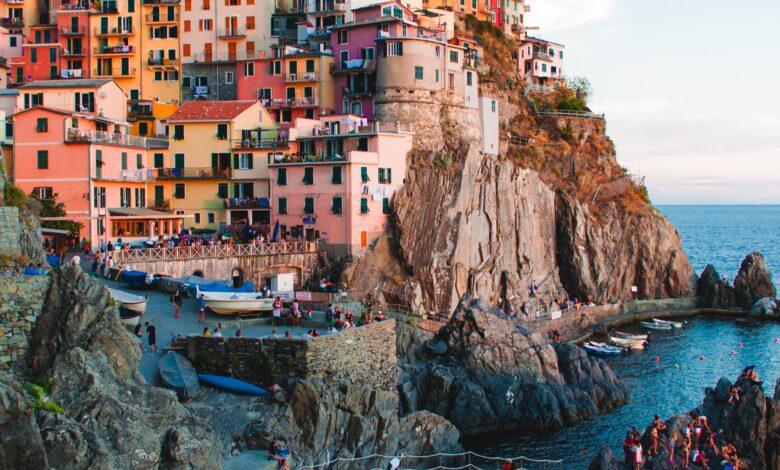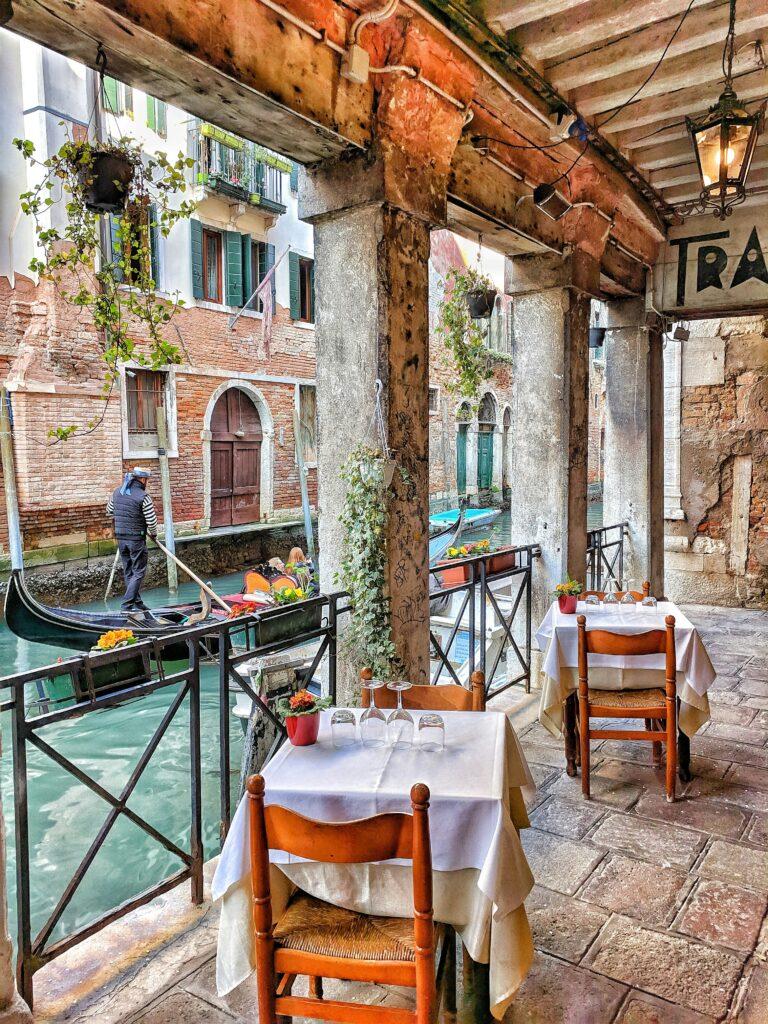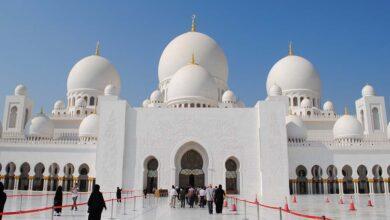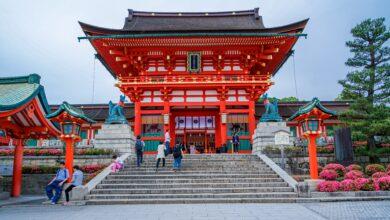🏛️ Exploring the Ruins of Pompeii and Herculaneum, Italy 🌋
Uncover the Mysteries of Ancient Roman Cities Buried in Ash

Introduction
Nestled near the infamous Mount Vesuvius, the ancient cities of Pompeii and Herculaneum offer an unparalleled glimpse into the daily lives of Romans before the catastrophic eruption in 79 AD. These archaeological wonders have captured the imaginations of travelers and history enthusiasts for centuries, providing a time capsule of a bygone era. In this article, we will embark on a virtual journey to explore the ruins of Pompeii and Herculaneum, unraveling their rich history, hidden treasures, and the ongoing efforts to preserve these extraordinary sites.
The History of Pompeii and Herculaneum
Historical Background of Pompeii and Herculaneum
Pompeii and Herculaneum, ancient Roman cities situated near the Bay of Naples in Italy, flourished during the first century AD. These cities were vibrant hubs of commerce and culture, boasting impressive architecture, bustling marketplaces, and opulent villas. Pompeii, a larger city, was a center for trade and had a population of around 20,000 people, while Herculaneum, a smaller but wealthier town, was known for its luxurious waterfront villas.
Both cities were thriving until disaster struck in 79 AD.
Eruption of Mount Vesuvius in 79 AD
The infamous eruption of Mount Vesuvius in 79 AD was a cataclysmic event that forever altered the course of history for Pompeii and Herculaneum. The eruption, one of the most catastrophic in recorded history, spewed volcanic ash, pumice, and gases, burying the two cities under a thick layer of debris. The eruption was so intense that it caused the collapse of the volcanic cone, forming the distinctive caldera we see today.
The eruption caught the inhabitants by surprise, and the speed and ferocity of the volcanic activity left little room for escape. The cities were quickly enveloped in a deadly mix of ash and volcanic material, preserving them in a state of suspended animation.
Preservation of the Cities Under Volcanic Ash
The preservation of Pompeii and Herculaneum under layers of volcanic ash proved to be a unique twist of fate. The thick blanket of ash not only devastated the cities but also acted as a remarkable preservative, freezing them in time. The ash created a protective barrier that shielded the structures, frescoes, and everyday objects from decay, providing modern archaeologists with an unparalleled glimpse into daily life in ancient Rome.
Over the centuries, the buried cities were forgotten, and their precise locations faded from memory. It wasn’t until the 18th century that intentional excavation efforts began, revealing an astonishing wealth of artifacts and insights into Roman life. Today, Pompeii and Herculaneum stand as archaeological treasures, offering a window into the past and serving as a poignant reminder of the destructive power of nature.
Planning Your Visit
Travel Tips to Reach Pompeii and Herculaneum
When planning your visit to the archaeological wonders of Pompeii and Herculaneum, consider the various transportation options available. Both sites are conveniently located near Naples, making it accessible by train, bus, or car. If you’re arriving by train, Naples Central Station is the main hub, and from there, you can take the Circumvesuviana train to Pompeii or Herculaneum. Buses also operate from Naples to these ancient cities, offering a cost-effective and efficient way to reach your destination. For those preferring the flexibility of a car, the journey from Naples to Pompeii or Herculaneum takes approximately 30 minutes, depending on traffic.
Ticket Information and Guided Tours
To make the most of your visit, it’s advisable to purchase tickets in advance. Tickets are available on-site or online, allowing you to skip the lines and save time. Consider opting for a combination ticket that grants access to both Pompeii and Herculaneum, providing a comprehensive experience of the region’s rich history. Additionally, guided tours are a popular choice for visitors seeking in-depth insights into the archaeological sites. Knowledgeable guides can enhance your understanding of the historical significance of each ruin, offering a more immersive and educational experience.
Best Times to Visit for an Optimal Experience
Timing is crucial for a rewarding visit to Pompeii and Herculaneum. The sites can get crowded, especially during peak tourist seasons. To avoid the masses and make the most of your exploration, plan your visit during the shoulder seasons of spring (April to June) and fall (September to October). During these times, the weather is pleasant, and the crowds are more manageable. Weekdays are generally less crowded than weekends, providing a quieter atmosphere for contemplation and exploration. Moreover, visiting in the early morning or late afternoon allows for softer lighting, enhancing the beauty of the ancient ruins and providing a more comfortable experience, especially during warmer months.
By considering these travel tips, purchasing tickets in advance, and selecting the optimal time for your visit, you can ensure a seamless and enriching exploration of the captivating archaeological sites of Pompeii and Herculaneum.
Pompeii: A Journey through Time
Main Attractions in Pompeii
Embarking on a journey through the ancient city of Pompeii is like stepping into a time capsule, where every stone and structure tells a story of the past. Among the main attractions is the Forum, the heart of Pompeii’s political and social life. Here, visitors can marvel at the remnants of temples, public buildings, and the Basilica, which served as a bustling marketplace. The Amphitheatre, a grand structure that once hosted gladiator contests and other public spectacles, provides a vivid glimpse into the entertainment preferences of the ancient Romans.
The House of the Faun, one of the largest and most lavish residences in Pompeii, showcases exquisite mosaics and frescoes. Meanwhile, the Temple of Apollo, with its iconic columns, stands as a testament to Pompeii’s religious life. These attractions collectively paint a vivid picture of the city’s prosperity and cultural richness before the catastrophic eruption of Mount Vesuvius.
Notable Buildings and Structures
Pompeii boasts an array of notable buildings and structures that highlight the architectural prowess of ancient Roman civilization. The Villa of the Mysteries, a suburban villa on the outskirts of Pompeii, is renowned for its well-preserved frescoes depicting mysterious rituals. The House of the Vettii, a luxurious dwelling adorned with intricate artwork, reflects the opulence of Pompeian elites.
The city’s bathhouses, like the Stabian Baths and the Forum Baths, provide insight into Roman hygiene practices and social interactions. The city’s intricate network of streets, lined with residential houses and shops, showcases the urban planning of the time. These structures collectively offer a fascinating glimpse into the daily lives of Pompeii’s inhabitants, illustrating their social, economic, and cultural activities.
Insights into Daily Life in Ancient Pompeii
Exploring Pompeii offers a unique opportunity to gain insights into the daily lives of its residents. The preserved ruins of bakeries, taverns, and brothels provide a glimpse into the economic activities and social dynamics of the city. The Lupanar, or ancient brothel, features explicit frescoes that offer a peek into the sensibilities of Pompeian society.
The preserved gardens and courtyards of private residences reveal the Romans’ appreciation for aesthetics and leisure. Graffiti found on the walls, though sometimes bawdy, provide a direct connection to the voices of the people. Together, these elements create a mosaic of daily life in ancient Pompeii, making it a captivating destination for history enthusiasts and casual visitors alike.

Herculaneum: Unveiling Ancient Treasures
Highlights of Herculaneum’s Ruins
Herculaneum, often overshadowed by its more famous neighbor Pompeii, is a hidden gem of ancient history waiting to be discovered. One of the key highlights is the Villa of the Papyri, an ancient Roman villa that once housed an impressive library of papyrus scrolls. This extraordinary find provides a glimpse into the intellectual pursuits of Herculaneum’s elite. The House of the Stags, adorned with intricate mosaics and frescoes, showcases the city’s artistic sophistication.
The waterfront location of Herculaneum, now pushed inland due to volcanic activity, reveals the city’s close relationship with the sea. The Suburban Baths, a well-preserved complex, reflect the Romans’ dedication to public hygiene and leisure. Exploring Herculaneum unveils a more intimate and compact urban layout compared to Pompeii, creating a sense of connection to the daily lives of its inhabitants.
Comparisons with Pompeii’s Archaeological Findings
While Pompeii and Herculaneum share the tragic fate of being buried by Mount Vesuvius in 79 AD, their archaeological findings offer intriguing points of comparison. Herculaneum’s ruins, due to being buried under a different layer of volcanic material, provide a different preservation perspective. The intense heat from the eruption carbonized organic materials, such as wooden furniture and even food, preserving them in situ. This level of preservation offers a unique window into the daily lives of Herculaneum’s residents, complementing the insights gained from Pompeii.
The smaller size of Herculaneum also provides a more concentrated and immersive experience for visitors. While Pompeii is expansive and showcases the grandeur of a bustling city, Herculaneum’s compact layout allows for a more intimate exploration of its well-preserved structures and artifacts.
Unique Aspects of Herculaneum’s Preservation
Herculaneum’s preservation under volcanic ash and mud has yielded unique aspects that distinguish it from Pompeii. The carbonization process, where organic materials turned into charcoal, has allowed archaeologists to uncover wooden furniture, doors, and even food items. The ancient beachfront, now transformed into a series of arches, adds an additional layer of uniqueness to Herculaneum’s landscape.
The Villa of the Papyri, with its collection of philosophical scrolls, stands as a testament to Herculaneum’s intellectual pursuits. The city’s smaller scale and its position closer to the volcanic source contribute to its distinct preservation characteristics, making Herculaneum a fascinating counterpart to the more widely explored Pompeii. Together, these two archaeological sites provide a comprehensive and multi-faceted understanding of life in ancient Roman times.
FAQs
Q. Can I visit both Pompeii and Herculaneum in a single day?
A. While possible, it’s advisable to dedicate a day to each site for a more immersive experience and thorough exploration.
Q. Are guided tours available at the archaeological sites?
A. Yes, guided tours with knowledgeable archaeologists and historians are available, providing valuable insights into the history and significance of the sites.
Q. What is the best time of year to visit Pompeii and Herculaneum?
A. Spring and fall offer pleasant weather and fewer crowds, making them ideal seasons to explore the ruins comfortably.
Q. Can I take photographs inside the archaeological sites?
A. Yes, photography is permitted, but the use of flash is usually restricted to preserve the integrity of the ancient artifacts.
Q. Are there dining options near Pompeii and Herculaneum?
A. Both sites have cafes and restaurants nearby, allowing visitors to enjoy a meal and refreshments during their exploration.
Q. Is it possible to see Mount Vesuvius from Pompeii and Herculaneum?
A. Yes, on clear days, you can catch glimpses of Mount Vesuvius from both Pompeii and Herculaneum, adding a scenic backdrop to the archaeological experience.
Conclusion
As we conclude our exploration of the ruins of Pompeii and Herculaneum, it’s evident that these archaeological wonders stand as testaments to the resilience of ancient civilizations. The echoes of the past reverberate through the preserved streets, buildings, and artworks, offering us a unique opportunity to connect with the people who once called these cities home. Whether you’re a history enthusiast, an art lover, or simply a curious traveler, the ruins of Pompeii and Herculaneum invite you to step back in time and witness the splendor and tragedy of an era forever captured in volcanic ash. So, as you plan your next adventure, consider adding these extraordinary sites to your itinerary and become a part of the ongoing journey to uncover the secrets of the past.
UP NEXT
https://thecopywriters.ca/mobile-optimization-crafting-copy-for-on-the-go-user/





Facebook Comments